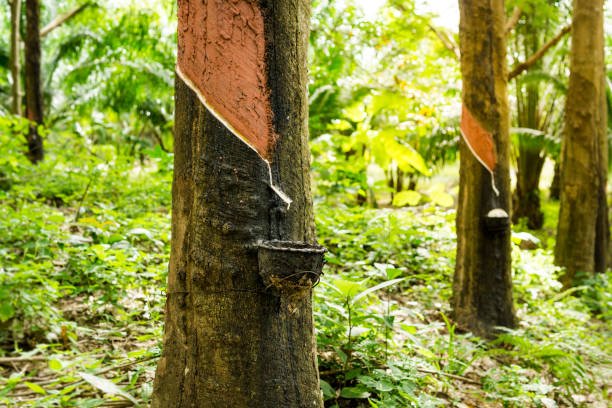How are Rubber Products Made from Latex?!
Rubber is one of the most used material in the world. We make use of it in our everyday life and it is found in almost every tool, equipment or machine we use ranging from machine components, car tires, cable jackets, hoses, waterproof shoes and swimming suits, shoe soles to balloons, elastic bands, rubber gloves and gadget cases.
Apart from water, concrete, plastics, iron and steel which are highly demanded and used worldwide, rubber should probably be the next on the list.
...
Rubber is of two types; natural rubber and synthetic rubber.
We all know from the elementary school level that rubber products are made from latex - a milky white liquid that oozes from a tree known as rubber tree (Hevea brasiliensis) when cut. This is known as Natural rubber.
As of now, rubber is highly demanded for in the economy and natural rubber is not sufficient in production to meet up therefore, synthetic rubber comes in place. Synthetic rubber accounts for about 60% of the rubber products used worldwide. Rubber made artificially from chemical plants or in the lab are referred to as Synthetic rubber. They are usually derived from crude oil and natural gases. Examples include: Neoprene, Emulsion styrene-butadiene rubber (E-SBR).
...
The usefulness of rubber lies within its great and distinctive properties:
- Poor conductor of heat and electricity
- Impermeability and resistance to air and water
- Elasticity
Naturally, a latex rubber is stretchy but this is not applicable to all rubber products as the degree of vulcanization might affect this property such as in car tires. - Hardness
- Tensile strength
How are rubber products are made?!
Right from the rubber tree, collection of latex is done by an experienced worker who is skilled at making precise slice and cuts on the bark of the tree to collect the latex in a cup strapped to the tree. This is known as the traditional rubber tapping.
When exposed to air for a long time, latex solidifies. To avoid this, workers usually add ammonia or formaldehyde to the collection cup to preserve the raw latex in its liquid state. The latex tranferred into a coagulation tank for preparation of dry rubber. Tappers also collect the cut lump which is the coagulated latex in the cup usually at its rim.
Colllected latex materials are processed into liquid latex or coagulated latex before transporting to the factory for manufacturing of rubber products.
Liquid latex is processed into a liquid concentrate by removing it water content by centrifuging. The concentrate is then shipped in liquid form to factories where it is used for making coatings, adhesives and the likes.
Coagulated latex is formed by adding organic acid to the raw latex which helps in coagulating the latex further. An extrusion dryer and rollers are used to remove the water content. The dried rubber sheet is then compressed, made in bales and transported to manufacturing industries.
...
The production of rubber involves four main steps, namely:
- Compounding
- Mixing
- Shaping
- Vulcanizing
Compounding entails addition of additives including reinforcing fillers (such as carbon black) to improve the rubber's properties in terms of tensile strength, resistance to wear and tear and other damaging factors. Natural rubber changes with temperature; they are brittle with cold and sticky with heat. Therefore, the compounding must be accurate depending on the final products to be made.
Mixing is usually done in two stages for better result. The first mixing is with additives like carbon black while the second mixing is with the chemicals (sulphur, bisphenol, peroxide) used in vulcanization of the rubber. Combining the two stages in one can lead to premature vulcanization hence, the desired product will be of low quality.
Shaping is the main manufacturing process of rubber products. The most common processes are extrusion, latex dipping, molding, casting and calendering.
Vulcanization completes the rubber-production process. Vulcanization creates the cross-connections between the polymers of rubber, and the process varies depending on the requirements of the final rubber product. The fewer the cross-connection, the softer the and more pliable the rubber becomes and otherwise.
Vulcanization process is not needed in molding as it as already occurred.
Without vulcanization, rubber would remain brittle with cold and sticky witg heat, and it would damage and rot much more quickly.
References:
- https://www.accurate-prod.com/capabilities/technical-info/molding-process/
- https://en.m.wikipedia.org/wiki/Natural_rubber
- https://www.explainthatstuff.com/rubber.html
- http://www.hygenic.com/news/the-4-most-common-rubber-manufacturing-processes.html
- https://www.britannica.com/science/rubber-chemical-compound
- http://www.madehow.com/Volume-3/Latex.html


no citations, do better.
I'll see to that. Thanks for the advice